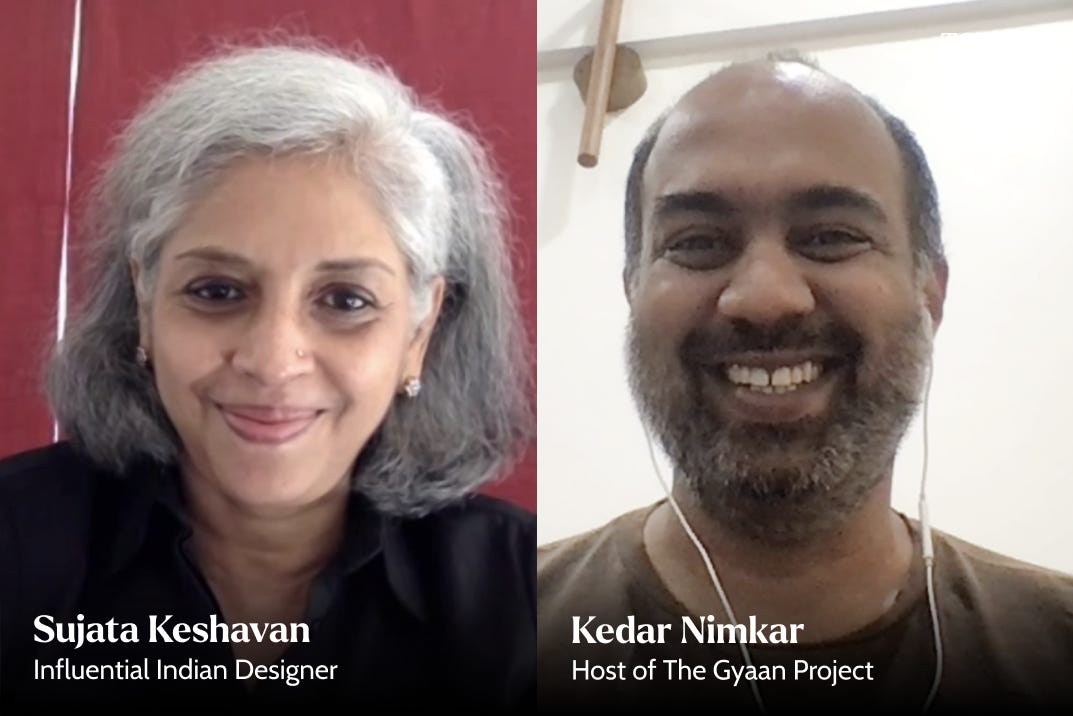When Design becomes destiny: 4 lessons from Sujata Keshavan
How did the design industry look in the '90s? How was it priced? What is the difference between art and design? Does India need more designers?
This week, we revisit our conversation with Sujata Keshavan (▶️Ep.207) . From boardrooms in the '90s to weaving stories through textiles at Varana, Sujata has consistently pushed design beyond surface and style.
Sujata Keshavan is the co-founder of Ray+Keshavan and the creative mind behind Varana. She has built some of India’s most iconic visual identities and continues to shape design thinking across industries.
1️⃣ What was it like to introduce design to Indian business in the 90s?
Short Answer: Build a common vocabulary
Long Answer: When I started Ray+Keshavan in 1989, most Indian companies didn’t understand design at all. They thought it was about decoration. I had to explain what design really meant, often to rooms full of engineers and accountants. Sometimes, they even asked their wives to give feedback! It was a different time. But those moments laid the foundation for serious design thinking in Indian business.
Brief History of Design by David Kelly.
2️⃣ How do you separate design from art?
Short Answer: Design solves. Art expresses.
Long Answer: For me, art is fundamentally about self expression but design is not. Design must come from the content. It must solve a problem. When designers impose their own style on everything, it becomes self-indulgent. Good design is functional. It must respond to the brief, to the user, to the world it’s trying to improve.
"Design must come from the problem, not from you." : Sujata Keshavan
3️⃣ How undervalued was design when you started out?
Short Answer: I was told to charge per square centimetre.
Long Answer: In advertising, design was priced at 2 rupees 65 paise per square centimetre. That was absurd. A small piece could require just as much thinking as a big one. I decided to charge for the idea, not the size. People saw design as print support but I saw it as Intellectual Property. That was the shift that I wanted to see in industry.
What do you think? Has the industry caught up with the mindset Sujata fought for? Share your take!
4️⃣ What’s the biggest gap in Indian design today?
Short Answer: We need more designers.
Long Answer : India needs millions of designers. But we simply don’t have enough schools. The ones that exist are mostly urban, expensive, and out of reach for many. And there aren’t enough educators either. Most designers prefer working in the industry. I believe design education should be part of engineering too. We need to embed design thinking across disciplines.
Economic Times had also published an article on the dearth of Designers that India faces.
Do a little wardrobe audit today. How much of your finest clothing is truly made in India? If the answer is very little, it’s time to ask why. Brands like Varana are changing that by blending heritage craft with global design. Next time you buy luxury, consider supporting stories woven at home.
Link to the full episode - Spotify || Youtube || Substack || Apple Podcast




